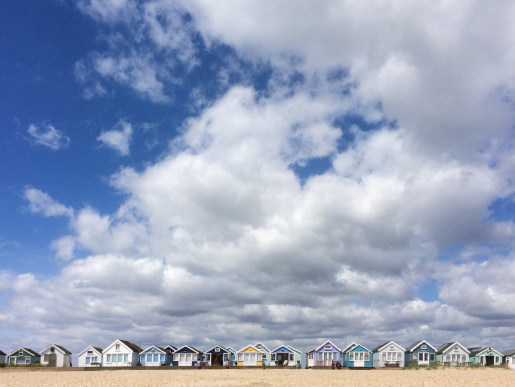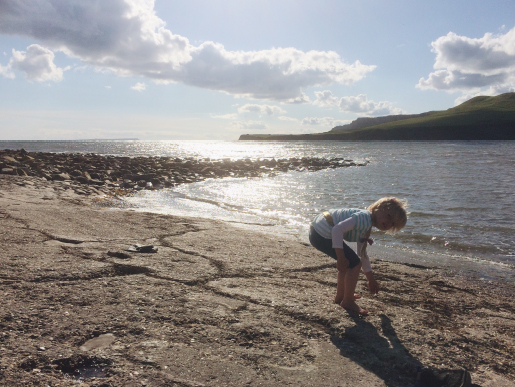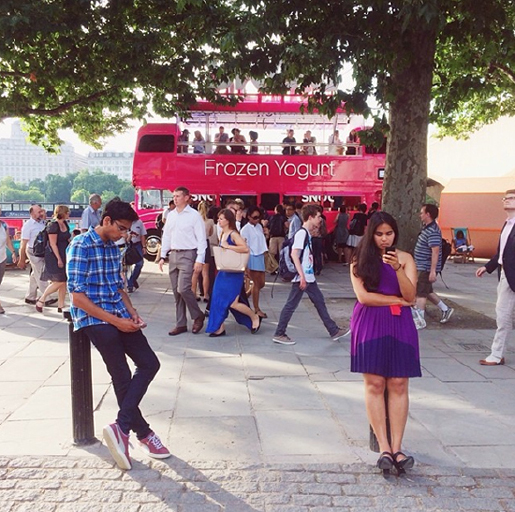
The short answer is: I don’t actually do much at all. When I first started taking pictures with my phone I’d go through phases of using a particular app or filter that took my fancy, and, of course, whenever a new bells ’n’ whistles app is released I still download and give it a try. But these days I find myself shooting and editing in pretty much the same way every time. I like to keep things simple.
Whatever camera you use to take photos, whether it’s film, toy, a DSLR or a phone, I believe it’s the strength of your composition that makes your photo work (or not). Doesn’t matter if you’ve used the most expensive camera on the market or the cheapest — it’s not the camera that creates the image, it’s your eye. One of the reasons I love shooting with film cameras so much is because it takes me back to photography basics: you set the exposure, compose the shot, focus and shoot. I don’t have to mess around with white balance and the other buttons on my DSLR I haven’t bothered to figure out. Likewise, I use my iPhone in an equally simple way. I’ve tried plenty of camera apps but they all have too many gizmos — I just want to compose my shot and take it.
I shoot all my photos using the basic camera app that comes with the phone (an iPhone 5S), alternating between the rectangle and square format, depending on how I want to frame the shot.
When taking the picture I hold the phone up keeping my arms close to my body — for crisp shots you need to keep the phone as steady as possible. When shooting Polaroids I always hold my breath as I take the shot and it’s the same with the iPhone. I only ever take one or two shots of a particular scene, a habit from shooting with film and not having many shots to spare — I also don’t want to use up all the memory on the phone with duplicate images. I take my time, compose thoughtfully, touch the screen to adjust the exposure and focus and then take the picture.
For editing I mainly use the VSCO cam app — I brighten the shot, maybe up the contrast a smidge and then apply a filter dialled down to about 60%. My current filter faves are M6, S2 and C2, with B3 and X1 used occasionally for B&W.
I occasionally put words on my pictures using Over or Word Swag. If I need to straighten or crop an image I’ll do it in VSCO; the SKRWT app is useful for correcting distortion in buildings. I use Snapseed for dodging & burning and TouchRetouch to remove stray cranes on skylines.


When posting to Instagram I use Afterlight to add white borders to rectangular images and I use the Dropbox app to upload edited images to the Dropbox folder on my computer. And that’s it.
For self portraits I use the basic camera app reversed (the lower resolution of the reversed camera helps smudge wrinkles ;-) and edit as usual with VSCO cam. In a moment of vanity I downloaded the Facetune app to test the skin-smoothing function and I can report that, yes, it works but I’ve yet to share a Facetuned photo anywhere as it looks so fake.
When it comes to selfies I’m not very adventurous — I think I got it out of my system at art college. Good hair days, feet shots and hand shots are all I feel the need for these days, so for some self portrait inspiration, check out my mates Amy Palko, Susan Tuttle and Vivienne McMaster.
Once in a blue moon I’ll use Hipstamatic just because I see it on my phone and think ‘oh, yeah, that app was always fun to use.” But in all honesty, I’m over it.
When sharing on Instagram I never geo-tag my photos purely because I switched off that function when it geo-tagged my home. If was travelling the world maybe geo-tagging would be fun, but usually I’m in London or with family — I don’t think people need to know exactly where I am. Privacy first and all that.
Other photo apps I’ve downloaded and kept on my phone: A Beautiful Mess, Diana Photo, PicTapGo, Litely, and Autostitch. There have been many more, of course, but they’ve long been deleted.
Shooting with my iPhone hasn’t changed the way I take pictures so much as facilitated my desire to shoot every day. I see photos everywhere and like to record my days, just for the sheer pleasure of capturing colour, light and shape. When I leave the house I always have my phone with me, though at this stage I really do view it more as a camera than a phone. For a while I was worried that using my iPhone more than my Polaroid cameras or even DSLR meant I was ‘cheating’. How could I call myself a photographer if I shot predominantly with a phone? But I’ve always believed that being a photographer simply means you express yourself using the photographic image — the tools you use don’t matter so much anymore (did anyone ever critique Picasso on his choice of brushes? No.) A writer writes, a painter paints and a photographer photographs. Simple as that.
I actually love that digital photography and now smart phones have made photography so accessible to everyone. These days photographs aren’t just taken on birthdays and holidays — we’re now recording and sharing our daily lives. We pay attention more. We’re exercising our creative muscles. Our eyes open wider every day.
It’s a beautiful thing.

